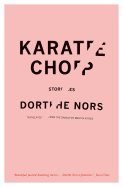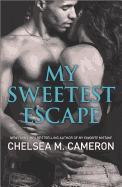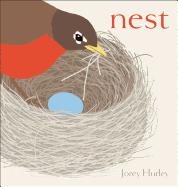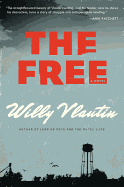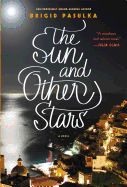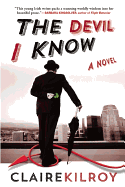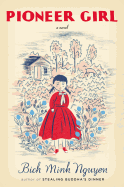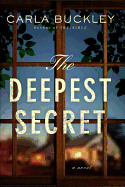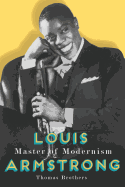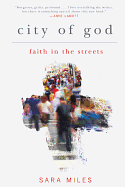Tonight on American Masters on PBS at 9 p.m., Alice Walker: Beauty in Truth, the first film biography about the novelist, poet, nonfiction writer and activist, makes its debut. It's timed to honor both Walker's 70th birthday, which takes place on Sunday, and Black History Month.
Directed by Pratibha Parmar, the documentary tells the story of an author who's tackled some of the toughest topics a writer can: racism, sexism, class and economic inequalities, as well as female genital mutilation. Parmar follows Walker's life from her birth into a family of sharecroppers in Eatonton, Ga., her relationship with her mother, early poverty and her participation in the Civil Rights Movement, all of which were major influences on Walker and her writing. (Parmar and Walker collaborated on the book Warrior Marks: Female Genital Mutilation and the Sexual Blinding of Women, which Parmar made into a documentary.)
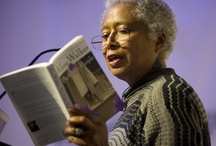 Of course, the film also highlights Walker's books, the best known of which is The Color Purple, which won the Pulitzer Prize and National Book Award. It was also adapted into a musical, as well as the film directed by Steven Spielberg and starring Whoopi Goldberg, Danny Glover and Oprah Winfrey. (Alice Walker: Beauty in Truth includes interviews with Spielberg and Glover, along with Quincy Jones, Gloria Steinem, Sapphire and the late Howard Zinn.)
Of course, the film also highlights Walker's books, the best known of which is The Color Purple, which won the Pulitzer Prize and National Book Award. It was also adapted into a musical, as well as the film directed by Steven Spielberg and starring Whoopi Goldberg, Danny Glover and Oprah Winfrey. (Alice Walker: Beauty in Truth includes interviews with Spielberg and Glover, along with Quincy Jones, Gloria Steinem, Sapphire and the late Howard Zinn.)
More than 20 years ago, I had the fortune of tagging along for part of Walker's tour for Possessing the Secret of Joy. In one memorable day in Atlanta, Ga., I saw her dazzle SRO crowds at the Shrine of the Black Madonna Bookstore and Cultural Center and at Charis Books & More--leading African American and feminist bookstores in the country--demonstrating the breadth of her appeal. Walker spoke slowly and intensely, each word measured, in the style of poets. Both crowds--who looked very different--listened in awed silence.
Don't miss this tribute to one of the legends of American literature. And don't miss her books! --John Mutter, editor-in-chief, Shelf Awareness
Karate Chop
by Dorthe Nors, transl. by Martin Aitken
From the cold regret of "Do You Know Jussi?" to the stifling disillusionment in "The Winter Garden," from the chilling paranoia of "Female Killers" to the elegant melancholy surrounding "The Heron," the stories in Karate Chop are as tremendous as they are brief. The first of Dorthe Nors's work translated to English from the Danish, Karate Chop is a collection rife with secret resentment, saturated with unrequited desire and driven by the perpetual force of memory.
The art of the short story pivots on a moment when circumstances converge to coax someone's soul into the open and expose it to scrutiny--of others, oneself or the solitary reader. Nors crafts her stories around the densest moments in her characters' lives, drawing every fine detail, complex emotion and delicate turning point into a hefty blow. With each story weighing in at a mere four or five pages, Nors doesn't waste any time delivering a knockout.
Karate Chop will surely draw the rapt attention of fiction lovers reading in English, and here's hoping there is plenty more from Nors to be translated. Her spare prose and scrupulous structures leave her stories feeling haunted by the scent of warm laundry and gasoline, the ache of love and fresh bruises and the sound of a direct hit reverberating in ambient normalcy. --Dave Wheeler, publishing assistant, Shelf Awareness
Discover: A Danish writer's striking English-language debut.
The Free
by Willy Vlautin
Willy Vlautin's fourth novel, The Free, begins on a more hopeful note than previous works like Northline and Lean on Pete. That brief moment happens when 24-year-old Leroy Kervin wakes up in his group home and, for the first time since a roadside bomb in Iraq exploded next to him, looks at a pinup girl on a calendar and makes sense of it. "Suddenly he could think things through, he could put things together, where in past years he'd been unable to." Since the explosion, he has trouble talking, walking, handling his emotions--a constant series of frustrations.
This sudden clarity is welcome but so suspect that Leroy instantly wonders if it is just an illusion--then decides to kill himself lest he fall back into fog and confusion. He succeeds only in injuring himself badly.
Freddie McCall, night man at the home, finds Leroy, blood everywhere, with a piece of wood sticking out of his chest. Freddie is a good soul; sympathetic and caring. His wife left him, taking his two beloved daughters to Las Vegas with her boyfriend. It's too far for Freddie to visit, but he calls his girls every night and tries to make conversation. The triumvirate of characters is completed by Pauline, a hospital nurse caring for Leroy. Pauline is alone in the world except for one girlfriend, her patients and her father, with whom she has a love-hate relationship.
These three wounded souls and their stories circle around each other and take on a poignancy that Vlautin creates, then maintains, masterfully. How can these three cope with what their lives and times have handed them? --Valerie Ryan, Cannon Beach Book Company, Ore.
Discover: A heartbreaking but hopeful tale of three people navigating personal, physical and psychological crises.
The Sun and Other Stars
by Brigid Pasulka
In The Sun and Other Stars, Hemingway Foundation/PEN Award winner Brigid Pasulka (A Long, Long Time Ago and Essentially True) looks at the power of sports and small-town life to mend hearts.
Etto's life came unmoored when his twin brother, Luca, died in a terrible accident and his mother drowned less than a year later, a probable suicide. The 22-year-old no longer feels at home in his small Italian villagio of San Benedetto; his relationship with his father suffers from as much disconnect as every other aspect of his life, even though they work together in the family butcher shop.
San Benedetto's citizens, including Etto's father, thoroughly love calcio--the Italian term for soccer, "or as most people here say it when they're trying to speak English," Etto tells us, "SO-chair, with a little roll on the r and a couple of kilograms of reverence in their voices." Etto, however, has never cared for the sport. But when accusations of cheating bring Ukrainian-born Yuri Fil, Etto's father's idol, to San Benedetto to hide out from the paparazzi, Etto finds himself befriended by the Fil family and finally swept up in the joy of the game. Although he initially accepts the offer to join the family's soccer practices just to impress Zhuki, Yuri's beautiful sister, Etto's confidence on the field and in life slowly grows.
Charming and hopeful, Etto's gradual reawakening to life and his purpose in it doesn't require soccer enthusiasm for readers' enjoyment, although the characters' joy in the sport may prove infectious. --Jaclyn Fulwood, youth services manager at Latah County Library District and blogger at Infinite Reads
Discover: A young Italian man who's lost his mother and brother reconnects with his family and villagio with the help of a professional soccer star.
The Book of Jonah
by Joshua Max Feldman
Among the biblical stories that most capture childhood imagination, Jonah's three days in the belly of a whale is near the top. However, Jonah's story is more about faith, doubt, obedience and redemption than just another hard-to-swallow miracle. In Joshua Max Feldman's loose retelling in The Book of Jonah, Jonah Jacobstein is a young New York City lawyer on a partnership track, romantically entangled with both his future fianceé and an off-again, on-again girlfriend. Then visions of the city sinking underwater and his fellow citizens walking about naked upend his success and take him on a journey into self-doubt and self-discovery.
In a twinge of conscience, Jonah leaks some of his firm's confidential documents and is fired. Relationships with both girlfriends broken, he heads to Amsterdam, where he has a brief encounter with troubled, enigmatic and energetic Judith--eventually leading him to the evangelical churches of Las Vegas, where he seeks to right a wrong he has done her.
Feldman captures the contemporary New York zeitgeist but also effectively tackles questions of biblical proportions: How can we live in a world we can't comprehend? How can we serve a God whose will we can't understand? If chasing success in Manhattan is the whale in Feldman's version of the Jonah story, escaping the city ultimately provides some small understanding; standing in the Nevada sun, "a shadow was cast across Jonah's face--and in the cool of this shadow Jonah felt a final mercy." --Bruce Jacobs, founding partner, Watermark Books & Cafe, Wichita, Kan.
Discover: In this loose retelling of the biblical Jonah story, a hotshot New York lawyer finds his life wanting and seeks another way.
The Devil I Know
by Claire Kilroy
Tristram St. Lawrence, 13th Earl of Howth, opted to go on a bender rather than attend his mother's funeral. Now, several years later, he is back--and not welcome in the castle. He takes a room at a hotel and runs into an old school bully, Desmond Hickey, who insists Tristram is dead. This is a recurring refrain in Claire Kilroy's The Devil I Know--just about all the novel's other characters believe Tristram died years before.
Tristram is a linguist, a world traveler who does business for and with many corporations and governments. His only real connection is his AA sponsor, M. Deauville--and they've never set eyes on each other. Meeting up with Hickey could be his undoing. "If adventure has a smell," Tristram thinks, sitting in a pub with Hickey, "if promise has a smell, if youth has a smell, it is that of beer in the sun." Tempting stuff, but he resists.
Hickey is more interested in Tristram's connections. Ireland is enjoying an unprecedented economic boom. Hickey and Tristram, with M. Deauville's blessing, start wheeling and dealing, buying and selling--and borrowing.
Then a bank goes under in New York, and suddenly, their assets are worthless. Though Tristram thought he was bulletproof because his father owned the assets pledged, his father dies the very night the bank collapses--leaving Tristram the proud owner of all the debt.
The Devil I Know is structured as a deposition, and Kilroy gives Tristram many moments of self-deprecation; he understands that what he is doing is not quite cricket, but is powerless to stop. --Valerie Ryan, Cannon Beach Book Company, Ore.
Discover: A cautionary tale of greed and hubris set in Ireland at the height of the "Celtic Tiger" boom, just before the global crash.
Pioneer Girl
by Bich Minh Nguyen
Bich Minh Nguyen's Pioneer Girl is a powerful, intimate novel that honors the legacy of one of the country's most beloved children's writers while speaking to the alienation and conflicts that mark the generational and cultural divide of Asian American families. It is a touching story about mothers and daughters overcoming emotional and physical frontiers.
Lee Lien is a jobless Ph.D. graduate who moves back home to work at the family restaurant amidst tensions between older brother Sam and their mother. When an angry Sam storms off after a disagreement, he takes all but one piece of jewelry--a gold pin with a faded image of a house surrounded by tall grasses, supposedly left at the Lien family's Saigon shop in the 1960s by visiting journalist Rose Wilder Lane, the eldest daughter of Laura Ingalls Wilder of Little House on the Prairie fame.
Curiosity about this artifact leads Lee on a cross-country trek to solve the literary mystery of Rose Wilder Lane and the Little House saga. The journey also forces Lee to confront the emotional and generational gaps that threaten to unravel delicate family ties. Through Rose we find Lee, and through Lee we discover the courage required to forge one's own identity outside the sphere of parental influence--and the joys and disappointments of pursuing the American dream so coveted by the Wilders and idolized by immigrants. Pioneer Girl speaks to the heart and will inspire lovers of the Little House books to revisit Laura's adventures on the Missouri and Iowan homesteads. --Nancy Powell, freelance writer and technical consultant
Discover: Nguyen (Stealing Buddha's Dinner) creates a spellbinding literary mystery that reflects the Asian American immigrant experience through the lens of Little House on the Prairie.
Mystery & Thriller
The Deepest Secret
by Carla Buckley
Carla Buckley's The Deepest Secret explores the limits to which a mother will go to protect her child. Driving one rainy night, Eve looks down at a text message and hits what she initially thinks is a deer. When she stops, she discovers she's killed Amy, the 11-year-old daughter of her next-door neighbor and best friend. With no witnesses, Eve has a difficult choice. She can tell the truth and go to jail, or live free with the guilt.
Eve's family is already strained to the breaking point. For years, her life has centered on protecting her now 14-year-old son, Tyler, whose affliction with the fatal light sensitivity condition xeroderma pigmentosum makes a normal childhood impossible.
Unbeknownst to Eve, her husband, David, feels disconnected from her and has grown closer with a young female coworker. Sixteen-year-old daughter Melissa is acting out dangerously, knowing her mother's total focus on Tyler will leave her free from parental intervention. Only Tyler knows about his sister's behavior--and Tyler has secrets of his own. Forced by his disease to remain in his light-proofed room during daylight hours and attend school via Skype, Tyler knows he'll never learn to drive, never meet a girl; according to the statistics, he probably won't even live to 20. Restless, Tyler sneaks out and roams the neighborhood at night, discovering that every household has a hidden pain or secret infraction.
Though often heart-wrenching, the extensive emotional development Buckley packs into a world of everyday life shadowed by nightmare will leave readers wondering how far they might go for their loved ones. --Jaclyn Fulwood, youth services manager at Latah County Library District and blogger at Infinite Reads
Discover: In this suburban thriller, a mother covers up a terrible crime to protect her family--including a teenage son who suffers from a fatal light sensitivity disorder.
Romance
My Sweetest Escape
by Chelsea M. Cameron
In My Sweetest Escape, Chelsea Cameron brings us a young woman who is both bitterly resentful and surprisingly funny. Jos Archer, a former star student at the University of New Hampshire, has recently suffered a "fall from grace" that prompted her to drop out of school and abandon all of her friends. Though she constantly refers to this turning point, the details of what occurred are kept hidden away. What is clear is that the experience has made her personality stranger, darker--with a lasting impact on her self-identity.
As part of her recovery, Jos transfers to another college in Maine to live with her studious older sister. There, she encounters Dusty, a flirty friend of her sister who chats up Jos every chance he gets. Despite his cockiness, there is something warm about Dusty that will charm readers along with Jos. Yet there's also something suspicious in his fixation with her, creating both sexual and narrative tension. Eventually, her past resurfaces in a way that both explains and taints their bond.
Though all of Cameron's characters feel genuine and likable, the most inspiring is Jos's friend Hannah, whose face is marred by a severe burn. Hannah's physical scar mirrors Jos's intangible psychological wound, and yet the former is arguably more self-assured. Their inverse situations seem to suggest the ability to hide one's pain can ultimately be a greater curse--and that Jos must unlearn this ability in order to let new love into her life. --Annie Atherton
Discover: A college dropout attempts to start over at a new school, but is seduced by someone who forces her to confront her secret past.
Biography & Memoir
Louis Armstrong, Master of Modernism
by Thomas Brothers
When Louis Armstrong died in 1971, he was beloved across the world. In jazz circles, he was known as Satchmo; to the world at large, he was the big-smiling Pops, the man whose natural ease with people of all races and nationalities made him the Ambassador of Jazz.
Music historian Thomas Brothers focuses on the drive, discipline and ambition that lifted Armstrong from a young New Orleans hotshot cornet player in the early 1920s to a sophisticated master of modern jazz within two decades. Brothers doesn't shy from Armstrong's checkered history, addressing his women (four wives and an unknown number of girlfriends), his lifelong marijuana use and his self-serving break from his early mentor Joe "King" Oliver. The focus, though, lies much more on the music. Brothers analyzes in depth the songs that defined Armstrong--hits like "Cornet Chop Suey," "Heebie Jeebies," "Big Butter and Egg Man" and "West End Blues" through which he developed a singing style ("full articulation, half articulation, blurred speech, and scat") to accompany his blistering horn solos.
With these breakthroughs, Armstrong became an entertainer who could move from the black dance halls of Chicago's south side to the tony white clubs of its north shore (for which he would be regarded by many African-Americans as a sell-out). According to Brothers, Satchmo understood that "breaking into the white market meant heavy emphasis on popular tunes," a skill he mastered even after he blew out his lip and couldn't hit the high notes any more.
With archival photographs and extensive endnotes, bibliography and discography, Louis Armstrong: Master of Modernism provides a complete picture of the critical decades that created the popular Ambassador of Jazz. --Bruce Jacobs, founding partner, Watermark Books & Cafe, Wichita, Kan.
Discover: A thorough history of the music and racial environment of Louis Armstrong's formative years, both professionally and personally, in the 1920s and 1930s.
Religion
City of God: Faith in the Streets
by Sara Miles
Sara Miles found both God and community inside the walls of the church. But after becoming a lay minister, then founding and running a food pantry at her Episcopal church, Miles felt an opposite, irresistible call: to take her faith back to the streets, to rub shoulders with creation in all its gritty, diverse glory. "For me," Miles notes in the introduction to her memoir City of God, "paradise is a garden, but heaven is a city."
Miles (Take This Bread) grounds her story in the events of Ash Wednesday 2012, when she and several friends carried ashes into San Francisco's Mission neighborhood, sharing the ancient ritual with friends, neighbors and strangers. Miles admits her discomfort at getting close--sometimes too close--to the area's colorful, often needy population. But with ashes in hand, she finds herself welcomed by everyone from street musicians to hairdressers, all craving a simple, powerful moment of connection.
In a culture obsessed with looking young and avoiding death, Ash Wednesday is an unmistakable reminder of mortality: we are dust, and to dust we shall return. Miles's reflections on the social problems and gentrification of the Mission can feel repetitive, but her writing shines as she narrows her focus to the ashes and the faces around her. The ritual of Ash Wednesday is somber, stirring up grief or fear for some people, but City of God throbs with life, wry humor and even joy. --Katie Noah Gibson, blogger at Cakes, Tea and Dreams
Discover: A gritty, joyful memoir of taking the ritual of Ash Wednesday into the streets of San Francisco.
Children's & Young Adult
Nest
by Jorey Hurley
With only 14 words in an astonishing picture-book debut, author and artist Jorey Hurley takes youngest children through the life cycle of a robin. On every spread, just one word appears, and Hurley uses each composition to place young readers' focus on the main event.
A bird carries a twig. The red of its breast, matching the book's title, identifies it as a robin. That twig becomes part of the first full spread (with one word, "nest," also in red). The layering of the tiny twig strands creates the birds' home, and simple geometric shapes introduce the major players and the set--an oval blue egg, the cozy circle of the nest, yellow triangles for the parents' beaks.
On the next page, the word "warm" prompts youngsters to play detective. Its placement also helps unlock the mystery. "Warm" appears across from the mother robin that incubates the (now unseen) egg; raindrops fall all around the nest, but pink buds on the branches indicate it's a warm spring rain. In subsequent pages, a peach-toned featherless bird bursts through the blue egg ("hatch"), the mother feeds the nestling a worm ("grow"), and soon the fledgling soars over the treetops ("fly"). Hurley wisely chronicles the passage of the seasons through one family's experiences in one tree, and occasionally introduces interlopers--a hummingbird, evidence of humans via a kite ("surprise"). In the closing spreads, a fourth robin alights on the tree, and the cycle begins again. A quiet masterpiece. --Jennifer M. Brown, children's reviews editor, Shelf Awareness
Discover: An astonishing picture-book debut introduces youngest readers to a robin family, the four seasons and the cycle of life.
Ignite Me
by Tahereh Mafi
Tahereh Mafi settles scores and unravels the complex psyches of her characters in this thrilling finale to her Shatter Me trilogy.
Juliette has vowed to kill Anderson, the Supreme Commander of the Reestablishment, which she hopes will end with his death. Nineteen-year-old Warner, Anderson's son, is on her side; he reveals that his ruthlessness in the past--attempting to turn Juliette into a human weapon--is a strategic, chess-like move against his father. At the end of Unravel Me, they believe that all of Juliette's allies at the rebel base, Omega Point, have been blown up. But it's not long before Mafi reveals the existence of eight survivors--including Kenji, Castle and Adam, Juliette's first love and friend (and Warner's brother). They plot a mission to rescue Sonya and Sara, twins with healing powers, but it's clear their small army stands little chance in their current conditions: Omega Point leader Castle is catatonic, Adam is wounded by his now-unrequited feelings for Juliette, and no one trusts Warner except for Juliette.
The love triangle involving brothers Warner and Adam grows even more complicated by Juliette's desire to be free after spending years as a prisoner. Juliette's sentiment makes her final declaration that much more poignant. Mafi unveils the tragic effects of war; these revelations, along with the high-octane battles and a narrative that traces the growing empowerment of her characters, bring this trilogy to a strong and blazing finish. --Adam Silvera, children's bookseller
Discover: The finale to the Shatter Me trilogy depicts the final battle for Juliette, the girl with a lethal touch, against the Reestablishment that once imprisoned her.
Extraordinary Jane
by Hannah E. Harrison
Hannah E. Harrison, in her exuberant first picture book about a dog who discovers her calling, endows her animal characters with soulful eyes and personality while retaining the traits nature gave them.
Barnaby Beluchi's posters of marvelous circus animals (e.g., "Penelope the Painting Pachyderm," a "Swingin' Monkey Band") dominate the opening spread, which introduces an unassuming Maltese: "Jane was ordinary, in a world that was extraordinary." With a turn of the page, youngsters see the animals performing as Jane looks on in wonder. Jane's mother, in a rose-pink tutu, rides a horse bareback ("She wasn't graceful like her mother"). Her father can lift an elephant with his two front paws ("or mighty like her father"; Jane carts off the pachyderm's droppings). Jane's brothers shoot out of cannons, and her sisters walk the tightrope. Poor Jane. "[H]er jokes were a flop... her music lacked musicality... her paintings, pizzazz." Harrison varies perspectives and color combinations, always keeping Jane just out of the spotlight: "Jane was just Jane." Throughout, Barnaby Beluchi's kind face betrays his fondness for the pup, even on a hilarious spread of Jane's attempt to stand on a giant red sphere (the "balancing ball disaster"), which sends the entire animal cast plus Barnaby right off the page and into the infirmary. Harrison's large-scale scenes of the circus give the contrast with the intimate images of Jane all the more impact.
All ends well for Jane. She's just the ticket for quiet moments of togetherness. --Jennifer M. Brown, children's editor, Shelf Awareness
Discover: In this winsome debut picture book, an ordinary pup realizes her true talents.
Ophelia and the Marvelous Boy
by Karen Foxlee
In this captivatingly original variation on Hans Christian Andersen's "The Snow Queen," Karen Foxlee (The Anatomy of Wings) threads themes of grief, friendship and faith into a suspenseful adventure in a cavernous museum.
A Boy, wrenched from his family because he fulfilled a prophecy from the wizards in his homeland, travels on a quest to a distant kingdom to save his people from the Snow Queen. Armed with a rudimentary sword, he can vanquish the powerful Queen, who turns everything to ice, from majestic trees to human hearts. A magical owl's charm helps the Boy on his journey to the faraway land, where he befriends a child King. They become faithful companions. The owl's charm, however, causes the Boy to remain a child, while the King ages. The monarch names his friend his Marvelous Boy, yet neglects him when a beautiful and mysterious woman arrives. The King marries her, and as his land turns to snow and ice, his Queen convinces him to imprison the Boy. ("We shall lock him away," urges the Queen. "He shall be displayed beside all the other precious things; he is a curiosity. I will feel safer.")
Now nearly 300 years later, 11-year-old Ophelia Jane Worthington-Whittard comes upon the Boy in a museum where her father, a sword expert, assembles an exhibit. The Wintertide Clock tracks the countdown to Christmas Eve, just three days away--the opening of the exhibit and the deadline for the Marvelous Boy to defeat the Queen. Foxlee creates in Ophelia a practical, logical heroine, a member of the Children's Science Society of Greater London. "Ophelia didn't consider herself brave but she was very curious," begins the main action of the novel, and with this first line, Foxlee spells out the heroine's inner struggle. Curiosity leads Ophelia to room 303, on the museum's third floor, where she discovers a keyhole, a blue-green eye on the other side, and a voice to go with it. "Who are you?" a startled Ophelia asks. " 'I don't have a name,' said the voice. 'It was taken from me by a protectorate of wizards from the east, west, and middle to keep me safe.' " Ophelia replies, "But I don't believe in wizards."
Foxlee's greatest achievement lies in the building of Ophelia's gradual willingness to venture outside her comfort zone and to accept things she would not ordinarily believe. Like Gerda in Andersen's version, Ophelia must embark on a journey, but it is an inner journey to a faith beyond facts, more than the physical journey through the museum's floors in search of the three keys that will set the Boy free and the sword he needs to complete his mission. Foxlee's Boy remains kind and compassionate--a companion spiritually and psychologically to Ophelia--while Ophelia's sister, Alice, takes on the role of Kai in Andersen's tale. Alice has begun to harden toward Ophelia ("ever since their mother died, which was exactly three months, seven days, and nine hours ago"). The sisters' grief over the loss of their mother takes hold in different ways. Alice, on the cusp of adolescence, falls under the influence of the beautiful curator, wearing lipstick and borrowing luxurious clothes from the museum's collection at the curator's urging. Ophelia undertakes the fight of her life to save the Boy.
Foxlee builds suspense through Ophelia's initial reluctance to believe the Boy, and no wonder Ophelia is dubious: "The trouble with magic was that it was messy and dangerous and filled with longing." The author invents fantastically frightening forces lurking in the museum, such as misery birds, ghostly girls (victims of the Queen's charms) and, most terrifying of all, the wicked curator herself. Ophelia and the Boy are the only ones who recognize her for who she is; Ophelia's father and sister fall under the wicked woman's spell. But the growing friendship between Ophelia and the Boy, and her gradual willingness to believe in the Boy's story, balance the fearful elements of the novel.
Ophelia's slow but steady awakening to the existence of magic in the world helps her integrate for herself the characteristics in her mother that once separated them. She sees that by opening herself to these possibilities, she keeps her mother close. Foxlee wisely equates the Boy's grief at the possibility of the destruction of the world--if they do not defeat the Queen in time--with the grief for Ophelia's mother that threatens to destroy her family. And Ophelia's family is her world. Through Ophelia's friendship with the Boy, they both begin to heal--the Boy by telling his story, and Ophelia by claiming new parts of herself that she shares with her mother. Splendid. --Jennifer M. Brown


